David B. Givens Quotes & Sayings
Enjoy the top 15 famous quotes, sayings and quotations by David B. Givens.
Famous Quotes By David B. Givens
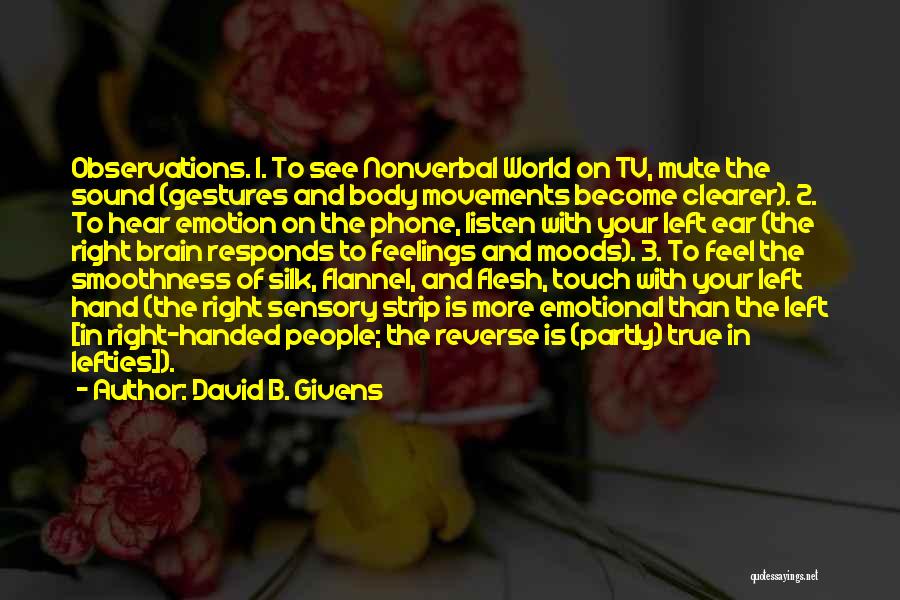
Observations. 1. To see Nonverbal World on TV, mute the sound (gestures and body movements become clearer). 2. To hear emotion on the phone, listen with your left ear (the right brain responds to feelings and moods). 3. To feel the smoothness of silk, flannel, and flesh, touch with your left hand (the right sensory strip is more emotional than the left [in right-handed people; the reverse is (partly) true in lefties]). — David B. Givens

Supermarket mandatory smile. In the late 1990s, Safeway, the second largest supermarket chain in the U.S., instructed its store employees to smile and greet customers with direct eye contact. In 1998, USA Today ("Safeway's Mandatory Smiles Pose Danger, Workers Say") reported that 12 female employees had filed grievances over the chain's smile-and-eye-contact policy, after numerous male customers reportedly had propositioned them for dates. Commenting on the grievances, a Safeway official stated, "We don't see it [the males' sexual overtures] as a direct result of our initiative. — David B. Givens

Yo-yo (Tagalog for "come back") evolved from a Philippine hunting tool made from a softball-size stone tied to a length of plant vine or a leather thong which enabled throwers to retrieve the weapon with a simple flick of the wrist (Hoffman 1996). The modern yo-yo thus has a great deal of physics, prehistory, and hunting lore encoded in its maple, beech, or plastic form (see below, Neuro-notes III). — David B. Givens
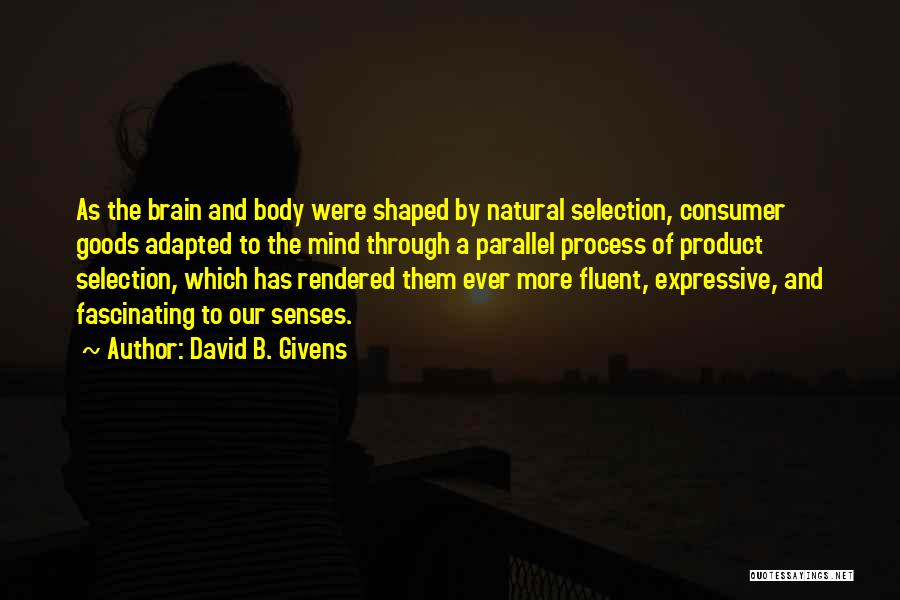
As the brain and body were shaped by natural selection, consumer goods adapted to the mind through a parallel process of product selection, which has rendered them ever more fluent, expressive, and fascinating to our senses. — David B. Givens
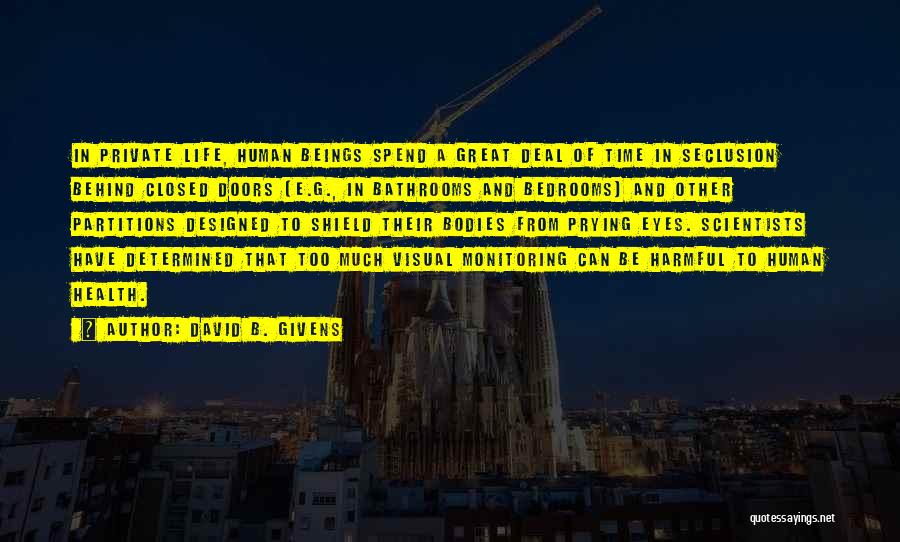
In private life, human beings spend a great deal of time in seclusion behind closed doors (e.g., in bathrooms and bedrooms) and other partitions designed to shield their bodies from prying eyes. Scientists have determined that too much visual monitoring can be harmful to human health. — David B. Givens

Many scientists (the most notable being Albert Einstein) think in visual, spatial, and physical images rather than in mathematical terms and words. (N.B.: That the theoretical physicist, Stephen Hawking, used an arboreal term to picture the cosmos [i.e., affirming that the universe "could have different branches,"] is a tribute to his [very visual] primate brain.) — David B. Givens

1. We crave meaty taste because the amphibian brain's hunger for flesh is older than the primate brain's "acquired taste" for fruits and nuts. 2. As it influenced the pursuit, handling, and killing of game, the amygdala also stimulated the release of digestive juices in preparation for eating the kill. Thus, today, hidden aggressiveness in the meat-eater's code makes a sizzling steak more exciting than a bowl of fruit. This explains, in part, why (when possible and affordable) meals throughout the world are planned around a meat dish. — David B. Givens
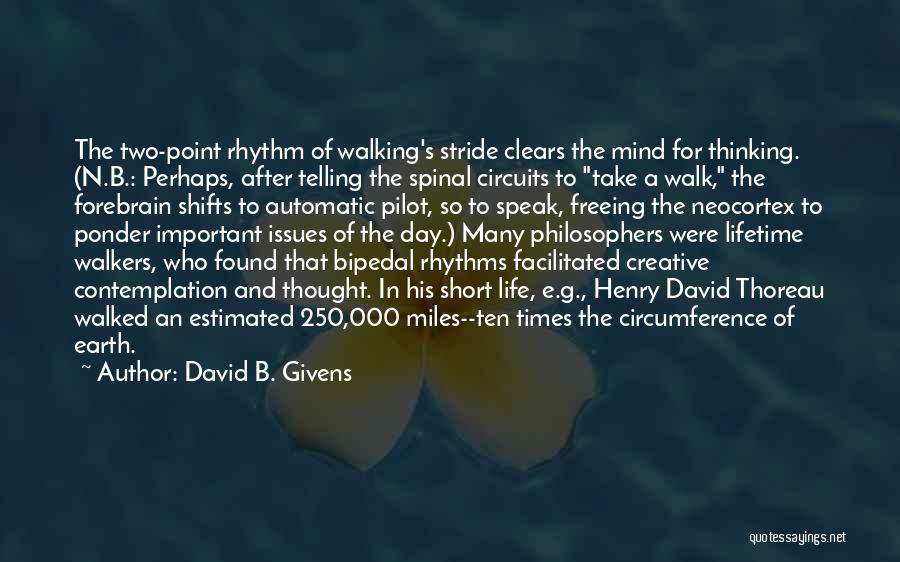
The two-point rhythm of walking's stride clears the mind for thinking. (N.B.: Perhaps, after telling the spinal circuits to "take a walk," the forebrain shifts to automatic pilot, so to speak, freeing the neocortex to ponder important issues of the day.) Many philosophers were lifetime walkers, who found that bipedal rhythms facilitated creative contemplation and thought. In his short life, e.g., Henry David Thoreau walked an estimated 250,000 miles--ten times the circumference of earth. — David B. Givens

Women are superior to men in decoding nonverbal cues (Rosenthal and DePaulo 1979). — David B. Givens

Unlike most other facial signs of emotion, the smile is subject to learning and conscious control. In the U.S., Japan, and many other societies, children are taught to smile on purpose, e.g., in a courteous greeting, whether or not they actually feel happy. — David B. Givens
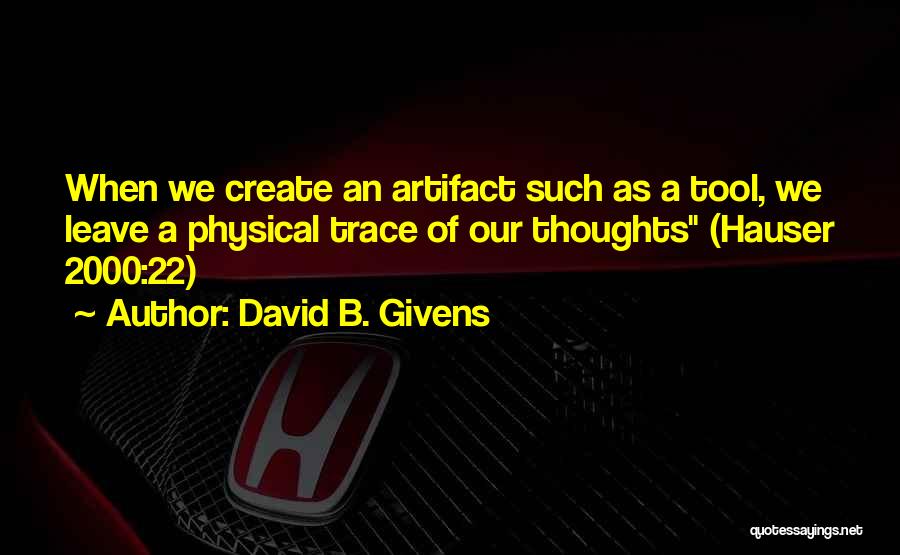
When we create an artifact such as a tool, we leave a physical trace of our thoughts" (Hauser 2000:22) — David B. Givens
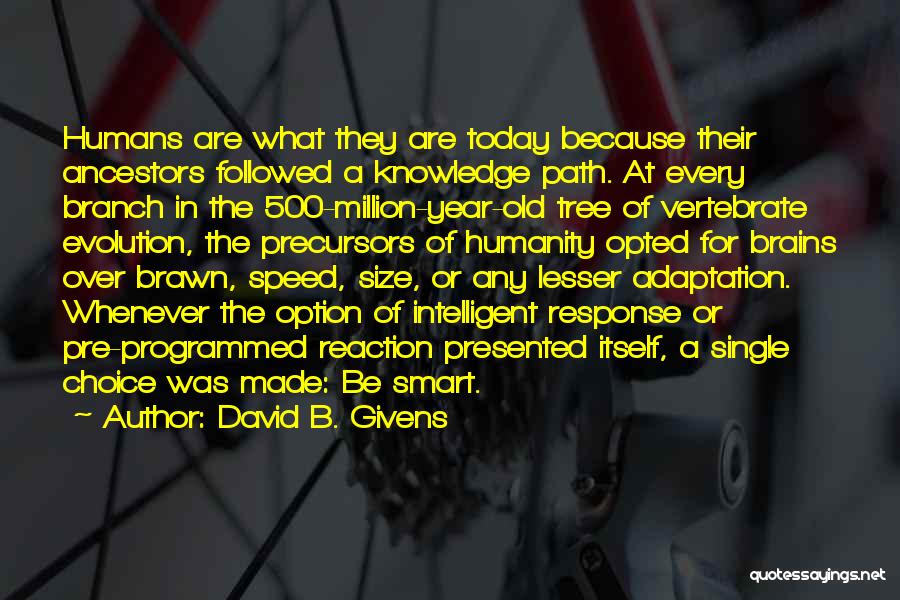
Humans are what they are today because their ancestors followed a knowledge path. At every branch in the 500-million-year-old tree of vertebrate evolution, the precursors of humanity opted for brains over brawn, speed, size, or any lesser adaptation. Whenever the option of intelligent response or pre-programmed reaction presented itself, a single choice was made: Be smart. — David B. Givens
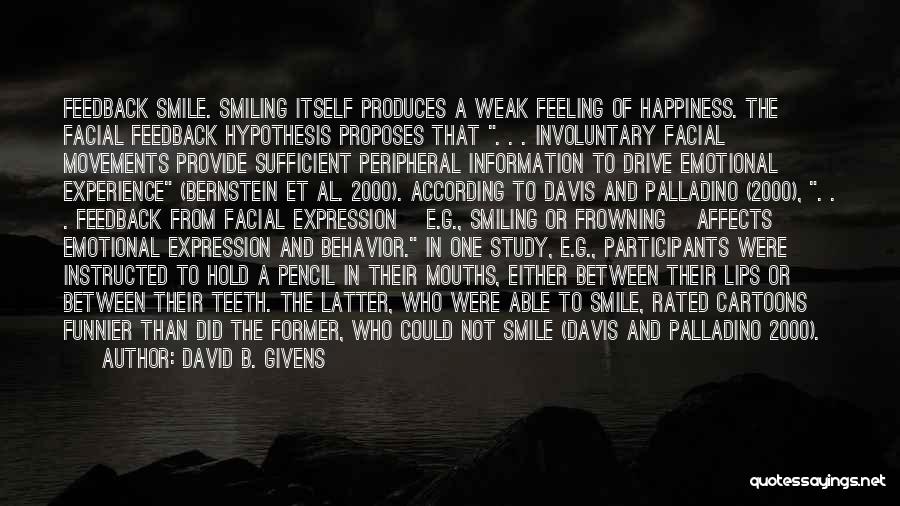
Feedback smile. Smiling itself produces a weak feeling of happiness. The facial feedback hypothesis proposes that ". . . involuntary facial movements provide sufficient peripheral information to drive emotional experience" (Bernstein et al. 2000). According to Davis and Palladino (2000), ". . . feedback from facial expression [e.g., smiling or frowning] affects emotional expression and behavior." In one study, e.g., participants were instructed to hold a pencil in their mouths, either between their lips or between their teeth. The latter, who were able to smile, rated cartoons funnier than did the former, who could not smile (Davis and Palladino 2000). — David B. Givens
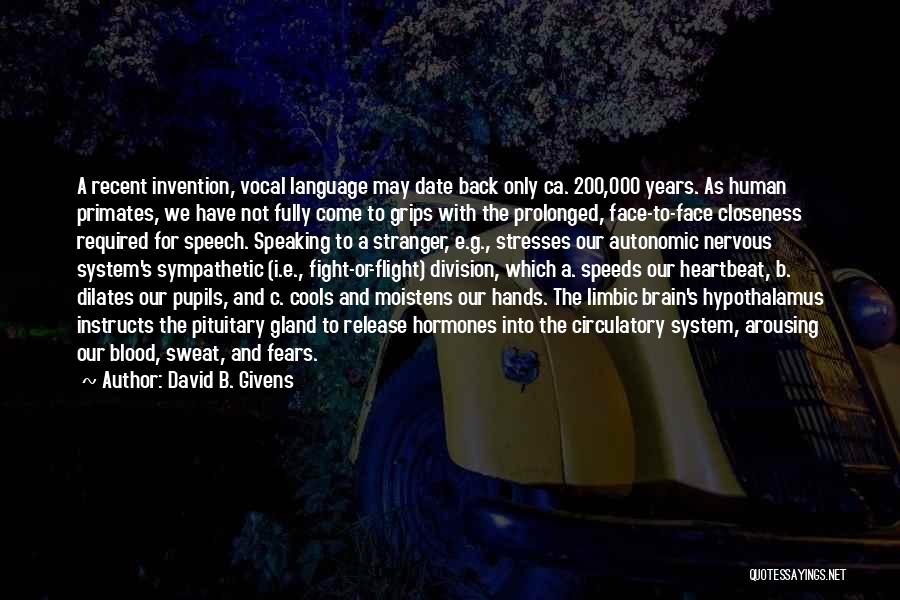
A recent invention, vocal language may date back only ca. 200,000 years. As human primates, we have not fully come to grips with the prolonged, face-to-face closeness required for speech. Speaking to a stranger, e.g., stresses our autonomic nervous system's sympathetic (i.e., fight-or-flight) division, which a. speeds our heartbeat, b. dilates our pupils, and c. cools and moistens our hands. The limbic brain's hypothalamus instructs the pituitary gland to release hormones into the circulatory system, arousing our blood, sweat, and fears. — David B. Givens
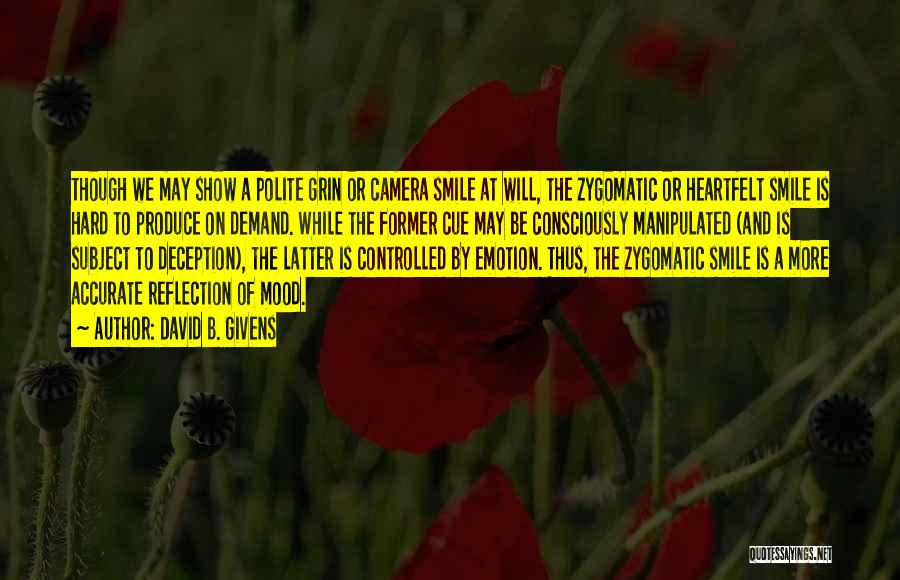
Though we may show a polite grin or camera smile at will, the zygomatic or heartfelt smile is hard to produce on demand. While the former cue may be consciously manipulated (and is subject to deception), the latter is controlled by emotion. Thus, the zygomatic smile is a more accurate reflection of mood. — David B. Givens





